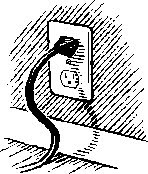In the last post, we talked about respiratory production of carbon dioxide, an environmentally innocuous process. We hear about the contribution of industry to carbon dioxide production, but I want to focus on something we can all relate to: the backyard barbecue grill.
The ubiquity of propane cannot be overstated. The stuff is all over the place and it isn’t limited to the twenty pound tank that fits beneath the barbecue grill. In my part of the world, New England, it’s used for standby electric generators, heating pools, hot water, fireplaces, etc. The use of it creates CO2 and I want to bring that down to practical focus for the average person.
The combustion of propane (C3H8) follows the following chemical equation for complete combustion:
C3H8 + 5O2 → 3CO2 + 4H2O
This chemical equation tells us that for every molecule of propane burned, it needs five molecules of oxygen. The gas that combustion produces contains three molecules of carbon dioxide and four molecules of water. Without going through the “chemical math,” what this is telling us is that for every pound of propane combusted, three (3) pounds of carbon dioxide is produced. It also tells us that for that one pound of propane about 3-2/3 pounds of oxygen is required and it yields about 1-2/3 pounds of water vapor in the process. Oh . . . and it produces heat too. All approximate, of course.
The 20 pound propane tank one purchases at the hardware store or supermarket, will put 60 pounds of CO2 into the atmosphere when combusted. Think about it.




not to mention the methane after the consumption of the barbequed ribs
ReplyDelete